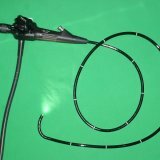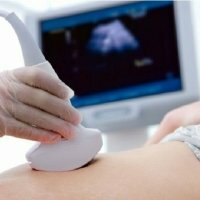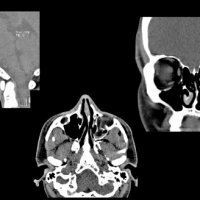Complications of endoscopy

The end position of the optics has the advantage that with an endoscope equipped with this arrangement it is possible to perform a sequential examination of not only the stomach but also the duodenum.
Indications and contraindications.
Gastroscopy can be:
- scheduled,
- extra.
Routine gastroscopy is used in all cases when its conduct helps to clarify or establish a diagnosis, as well as to identify changes in the stomach that may affect the determination of the choice of the most rational method of treatment.
Emergency gastroscopy is used to identify the causes of gastric bleeding, remove foreign bodies from the stomach, and also when differential diagnosis of the stomach or acute surgical diseases is required. In addition, emergency gastroscopy is assigned to determine the nature of pyloroduodenal stenosis( functional or organic).Contraindications to the conduct of endoscopic studies are various diseases of the esophagus, which do not allow the endoscope to enter the stomach, or there is a high risk of perforation( scar structure, esophagus burn, aortic aneurysm, etc.).
A relative contraindication may be a general severe condition of the patient about the presence of concomitant diseases. However, esophagogastroscopy is sometimes justified even in patients with impaired cerebral circulation, acute infarction, etc. This, for starters, refers to such diseases that pose a direct threat to the life of the patient. So, gastroscopy is performed even in patients with myocardial infarction, if bleeding occurs in the gastrointestinal tract. And not only to stop it, but also to identify the extent and cause of bleeding.
Contraindications and indications for endoscopy have always served and are the subject of discussion among practicing doctors and scientists. This state of affairs is explained by a large number of various diseases and their complications, a great variety of endoscopy methods for research and treatment, differences in the tasks assigned to them, as well as individual differences and characteristics of patients and many other factors.
Concerning the conduct of planned endoscopic studies, there are two different, even opposite, points of view.
- The first of these states that modern methods of endoscopy should be used as widely as possible, since they have the highest diagnostic efficiency.
- Another point of view is held by those who believe that the selection of patients for endoscopy should be as strict as possible.
Both opinions have positive and negative sides. The wide application of endoscopic studies increases the effectiveness of the diagnosis, and allows detecting malignant and benign diseases at their early stages of development, when they are most easily treatable. However, it is also natural that a wider application of endoscopy methods leads to more different complications, which largely discredits them in the eyes of both patients and doctors themselves.
When determining indications for endoscopic examinations and interventions, two rules should be followed:
- The diagnostic and therapeutic effectiveness of the study should not be more important than the risk of complications of endoscopic tests.
- Endoscopic studies should be of practical importance during the determination of the tactics of treatment of the patient.
If these rules are taken into account, doubts about the appropriateness and necessity of endoscopic examinations disappear altogether.
Failures and complications of endoscopic studies.
The use of modern endoscopes gives a certain guarantee of endoscopy safety. The most dangerous complications are various damages to the walls of the internal organs being examined.
For example, perforations are possible with the gastro-esophagus of the esophagus, which are most often observed:
- in elderly people,
- in patients with unstable mental component,
- when injected with insufficient anesthesia,
- poor visibility.
Known complications such as retrograde penetration of the distal end of the gastroscope even into the esophagus. Such complication requires obligatory surgical intervention, it is observed in cases when the endoscope was introduced without visual control.
A fairly frequent complication is damage to the mucous membrane of the stomach wall, observed with fairly rough manipulation, excessive bending of the distal end of the device. And also its extraction with fixed by means of control levers, a distal wire.
Quite unpleasant feelings in patients are caused by the injection of a large amount of air inside the stomach, as well as a significant intake of it into the gastrointestinal tract.
Bleeding after gastroscopy is most often observed after additional diagnostic( biopsy) or therapeutic( removal of foreign bodies, polypectomy) manipulations are carried out. The gastric perforation, in this case, is noted only in the area of the tumor or ulcer and is due to their preperforative state.



